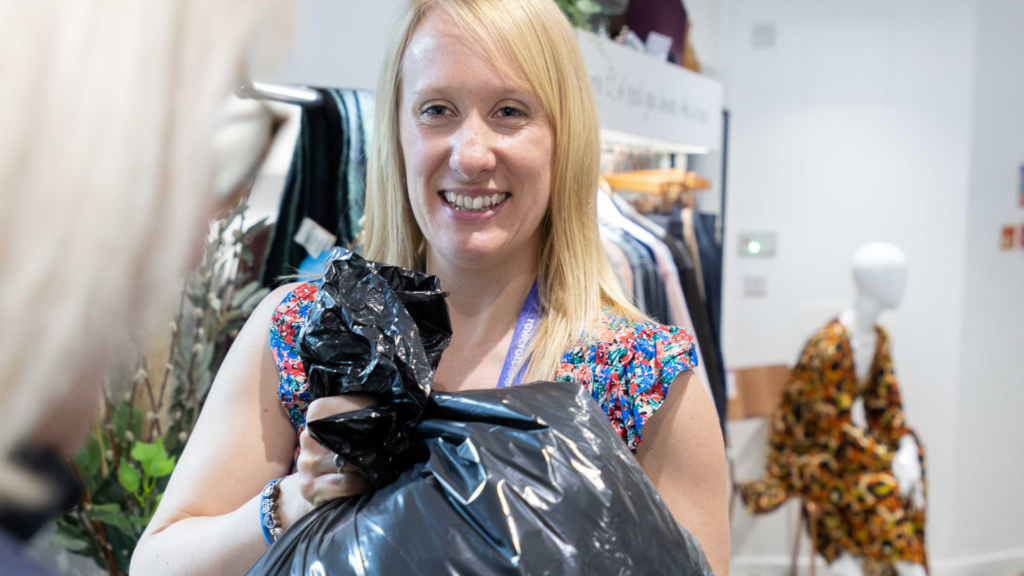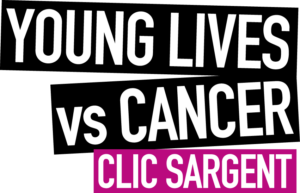A regular, high-quality supply of donated goods are the lifeblood of charity shops, but what does it take to attract, retain, sort and sell these donated items, and how do charity shops maximise the income generated per item sold? In this blog we explore ways charity retailers can increase donations of pre-loved items to charity shops.
Key Takeaways
- Define your charity’s mission and goals
- Develop a strong online presence
- Tell compelling stories about your charity
- Identify and engage with regular charity shop donors
- Build a loyal supporter base
- Launch donation and fundraising campaigns
- Host events for donors
- Enhance supporter engagement with technology
- Make giving pre-loved charitable donations to shops easy
- Encourage Retail Gift Aid sign up
- Offer incentives and recognition
- Manage preloved stock effectively
- Simplify charity shop sales
- Track and analyse donor data
- Continually improve and refine
Building a Strong Supporter Strategy
It’s crucial for charities to shine bright with a mission that truly speaks to the hearts of donors. Having a unique value proposition helps build meaningful connections with your supporters. For successful fundraising, Heads of Fundraising and Retail Managers should aim for specific, measurable objectives and clear key performance indicators. This way, charities can easily track progress and see how well they’re meeting their goals. By taking this approach, charity retailers can stay on track and make a real difference in the communities they serve.
1. Define Your Charity’s Mission and Goals
- Charity’s should shape their mission and goals to inspire potential donors and supporters.
- Organisations should develop a unique proposition that sets your charity apart from others in the non-profit sector.
- Heads of Fundraising and Retail Managers should set specific, measurable objectives to track progress and identify key performance indicators to evaluate performance against targets.
Communicating and Connecting with Donors
Effective communication with donors is essential for charity retailers. A strong online presence allows charity shops to share impactful information and appeal for donations, which boosts donations of pre-loved items and builds engagement with supporters.
2. Develop a Strong Online Presence
- Create a user-friendly website with secure online donation forms to facilitate and drive online donations of cash and preloved items. Use integrated website software like Kudos’ to book and arrange collections of larger donations, and offer Retail Gift Aid sign-up online.
- Build a social media presence to raise awareness about your charity, engage with potential donors through your charity’s relevant social media platforms and appeal for donations on a regular basis. Empower shop managers to promote their stores through social media too.
3. Tell Compelling Stories about your Charity
Donors have the option to sell or dispose of their items, or donate elsewhere, so it takes a compelling and often personal reason for them to choose to donate their items to your charity, which takes time and effort on their part. Therefore it’s crucial to regularly update your supporters on how their donations are making a difference. Here are some top tips:
- Share true stories that highlight the impact of your charity’s work and inspire supporters to give more donations to your charity shop. Sharing beneficiaries’ stories, and real images, creates an emotional connection with supporters who recognise the importance of their donation to the charity’s mission and goals – this in turn encourages more donations.
- Focus on impact, celebrate milestones, and invite supporters to be a part of the journey. This transparency builds trust and reinforces their commitment to your cause.
- Use campaigns during a specific period to create a sense of urgency for specific donations, e.g. seasonal, unwanted gifts, or specific departments.
- Encourage shoppers to raise additional money for your charity’s cause by explaining the importance of Retail Gift Aid.
- Showcase the benefits of giving via your fundraising pages, and the difference donating can make in the lives of others and to the invaluable charitable work people rely on.
Leveraging Donor Relationships
By identifying and engaging with regular supporters, charity shops can create a community of loyal contributors who are invested in their mission. Effective communication, appreciation, and recognition play crucial roles in building a strong group of supporters.
4. Identify and Engage with Regular Charity Shop Donors
- Charity shops should research and identify potential corporate donors or regular supporters who can make a significant impact on fundraising.
- Develop relationships with donors to build trust, show gratitude and encourage repeat donations.
- Charity shops should encourage regular donations of good quality items from shoppers and supporters.
- Send thank you emails, letters, or messages and offer recognition and gratitude to supporters to show appreciation for their support.
5. Build a Loyal Supporter Base
Here are some great examples of ways to engage with your individual donors:
- Focus on retaining existing donors and encouraging more people to make repeat donations to maximise fundraising potential by communicating regularly with your gift aid supporters.
- Develop a loyalty program to reward and recognise loyal customers.
- Use the business intelligence from your retail system and fundraising software to better understand donor behaviour and preferences.
Running Effective Donation Campaigns
In today’s competitive retail environment, effective donation and fundraising campaigns are vital for charity shops. A strategy that engages supporters through various channels is crucial. Setting clear campaign goals and promoting appeals can encourage people to donate and drive up the number of good quality, pre-loved items to your shops. Hosting events for donors strengthens community ties and visibility. Collaborating with businesses can also expand your charity’s reach raising more money for good causes.
6. Launch Donation & Fundraising Campaigns
- Develop a comprehensive fundraising strategy that incorporates multiple channels and tactics.
- Set clear goals and objectives for each retail fundraising campaign to measure donations, footfall, money raised and other KPIs.
- Use social media and email marketing to run campaigns, communicate the key benefits of your charity and encourage donations.
- Create a sense of urgency and propose a suggested donation, for example ‘we desperately need donations of women’s clothes’ or ‘fancy dress needed now’.
7. Host Events for Donors
Engaging well with new and loyal supporters across your charity can help drive donations and sales in your shops
- Organise fundraising events and donation activities that bring people together and encourage charitable giving and in-person donations.
- Use events to build relationships with new donors and promote your charity’s mission.
- Develop strategic partnerships with major donors, businesses, foundations, and other organisations and collaborate with partners to develop co-branded fundraising campaigns, events like a corporate giving day, and additional support.
- Use corporate partnerships to leverage resources, expertise, and networks to amplify your charity’s impact.
- Offer sponsorship opportunities and recognition to corporate supporters and fundraising partners as part of your charity shop’s campaign.
How to Increase Donations for Charity Shops
In order to stay competitive and make a difference, charities must explore innovative ways to engage with their supporters, they should streamline their donation processes and maximise income generated from shop sales, Retail Gift Aid and additional fundraising activities – raising money for their beneficiaries.
8. Enhance Supporter Engagement with Technology
Engaging with customers, donors and supporters is crucial to any charity shop donation strategy and there are now more ways than ever to motivate and inspire people, and reward your important stakeholders.
Software and apps like the Kudos Charity Card app enables your charity to stay in regular contact with your supporters. The app makes donations, Retail Gift Aid and loyalty even easier by making the donation process simple and rewarding for users and is very simple to set up.
9. Make Giving Pre-loved Charitable Donations to Shops Easy
Donating to charity shops requires time, energy and commitment from your donors. Some supporters are emotionally connected to their items, some are grateful to see the back of them but either way they are donating funds or goods in order help the charity of their choice and see their goods going to a good home. They want the donation drop off process to be quick and simple.
Let your donors know where and when they can donate and drop off donations. Many charity shops are using in store point of sale and signage to highlight ‘donation stations’ and provide information about Retail Gift Aid, and some even have drive through drop off points or dedicated sorting and handling warehouses.
Charities are specialising in large ticket items such as white goods and furniture and have drivers who can collect larger donated items. Specialist software like Kudos’s simplifies the entire furniture reuse process, from the initial phone call to delivering the goods. Let your donors know via social media and via your website that they can call, or book online, for collections.
Start a campaign of collections from local businesses or communities, using social media or your corporate supporter contacts to drive donations to locations away from the shop.
10. Encourage Retail Gift Aid Sign-up
Retail Gift Aid is a tax incentive run by the UK Government, which allows individuals who pay income tax to make tax-effective donations to charity. When donations are made to charity shops by individual taxpayers, they are required to complete a Gift Aid declaration sign up form, so that the charity can claim an extra 25% of the value of the donation sale from HMRC. Many charities are missing out on some of the extra income they could generate from Retail Gift Aid sign ups.
Most charity retail systems, like Kudos, offer supporters a sign up option when dropping off donations but the Kudos SignUp app makes the process simpler and faster by signing donors up on a tablet, away from a till. It also records donations and sends ‘Thank you’ messages so that charities can show their appreciation.
11. Offer Incentives and Recognition
Incentives and loyalty schemes not only enhance supporter engagement but also encourage a sense of community and belonging. By offering exclusive regular updates and personalised communications, such as ‘thank you’ messages, charity’s can create a more meaningful connection with their supporters, and inspire people, making them feel valued and appreciated.
- Develop a recognition program to thank and acknowledge donors for their support.
- Offer incentives such as exclusive updates, event invitations, and recognition on your website.
- Use incentives to encourage footfall and increase sales.
- Run promotions such as lottery to generate more funds.
- Say ‘thank you’ when supporters donate pre-loved items.
- Lots of small donations make a big difference and are easier to absorb into stock.
Rewards such as loyalty points, VIP events or special promotions can all encourage more regular customers to your shops. Lottery schemes can also help nonprofits raise funds and extra income, from both loyal donors and new supporters while adding an element of excitement to the giving experience.
Managing Stock and Sales of Donated Goods

In charity retail, every donated item has a story and connects the donor to the cause. Caring for these items generates goodwill and encourages support. By managing stock, rotating displays, and using strategic promotions, charity shops can increase sales and improve the shopping experience. Software like Kudos can simplify operations, enhance the donor experience and improve customer service.
12. Manage Pre-Loved Stock Effectively
Train your instore team to treat pre-loved donated items with the care and respect they deserve when a donor hands them over to your charity shop. Keep the stock that sells in your store and consider the best way the other items can be sold.
Rotate stock to keep displays seasonally relevant and create space in the stock room or warehouse to ensure there is capacity for excess stock, or out of season goods.
Run multi-buy and price point promotions to create volume sales of specific items that you have in excess.
13. Simplify Charity Shop Sales
Each donation presents a chance to connect with and inspire your donor while also generating essential funds. When done correctly, your donors can evolve into long-term supporters and champions of your charity.
A charity EPOS system like Kudos is a great tool to support the customer experience by streamlining sales and managing the gift aid process, enabling your shop team to interact positively with as many visitors as possible.
By implementing a charity retail system, not only can retail managers enhance the efficiency of your charity’s operations, but the software can also provide a seamless experience for your donors. This technology allows you to streamline donor interactions, tailor communications, and recognise supporter contributions in a meaningful way.
Measuring Success
Use data and analytics software to provide business intelligence to your head office and retail teams. This information will provide more insights needed to make data driven decisions and steer your supporter strategy in the right direction.
14. Track and Analyse Donor Data
- Use data and analytics to track donor behaviour, supporter preferences, and giving patterns.
- Analyse data to identify business intelligence, trends, opportunities, and challenges in your retailing and fundraising efforts.
- Use data to inform instore, fundraising and supporter strategies and optimise results.
15. Continuously Improve and Refine
- Regularly evaluate and refine your strategies to ensure maximum impact.
- Gather feedback from donors, volunteers, customers and stakeholders to identify areas for improvement.
- Stay up-to-date with the latest fundraising trends and best charity retail practices to stay ahead of the curve.
Conclusion
A successful donor strategy is about enhancing the donor experience and building a community of dedicated advocates to support your charity’s mission and goals. By defining their mission and goals, charities can effectively engage potential donors.
Effective communication with donors is vital for charity success. By building a strong online presence, using social media, and sharing impactful stories, charities can deepen connections with supporters. Transparency and regular updates foster trust and encourage ongoing donations. Targeted campaigns that create urgency and highlight the benefits of giving can inspire regular giving.
Charity shops can significantly enhance their fundraising efforts by actively identifying and engaging with regular donors. By fostering strong relationships, expressing gratitude, and offering recognition, these organisations can cultivate a loyal supporter base.
By clearly communicating drop-off locations, using effective signage, and leveraging technology, charities can simplify donations, sales, and Retail Gift Aid sign up. Ultimately, efficient donation processes and excellent service ensure more goods are donated, raising money to reach those in need, creating a positive cycle of community giving and charitable equity.

















